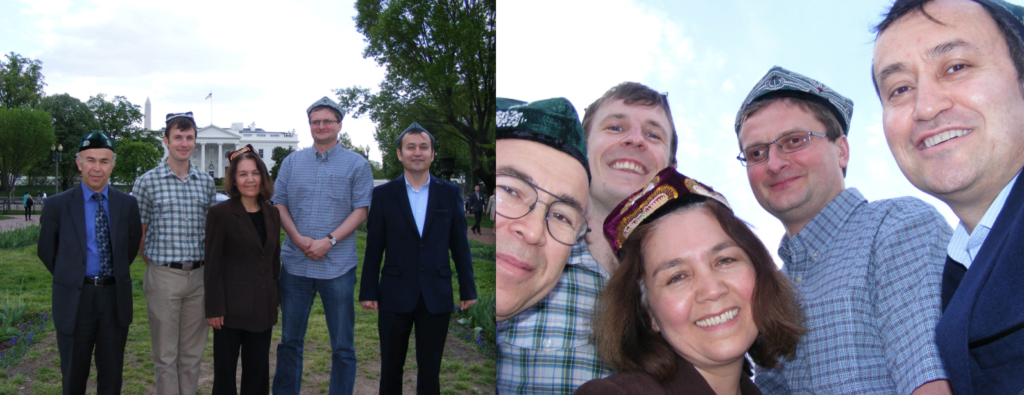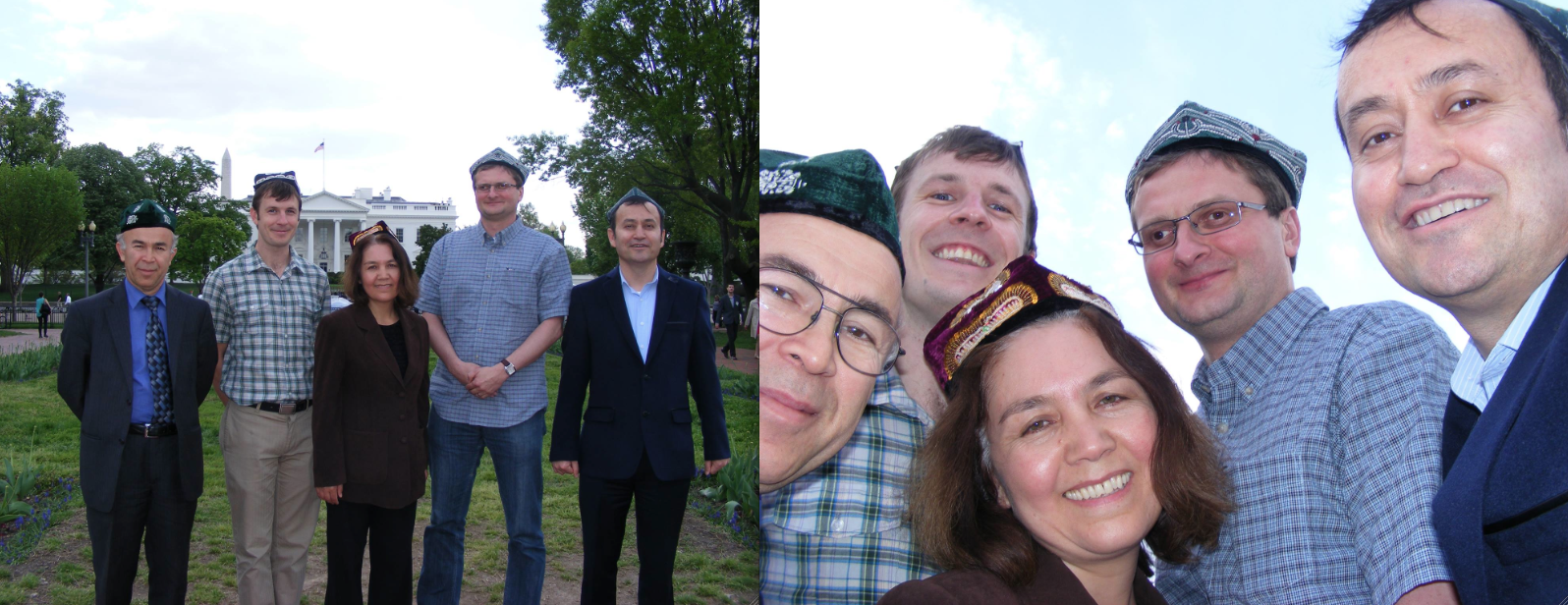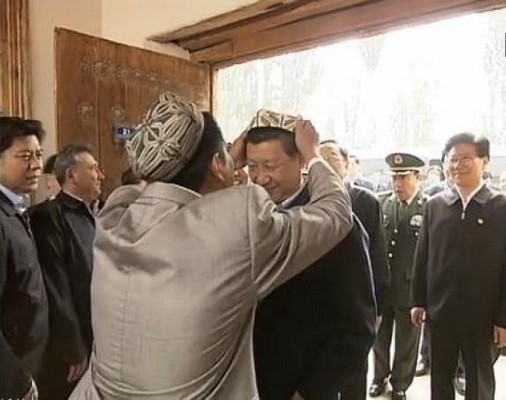Schools in East Turkestan Suppress Doppa Festival

May 16, 2014
Greg Fay, Manager, Uyghur Human Rights Project
Listen: UHRP interviews a Uyghur student about suppression of the Doppa festival
May 5, 2014 marked the fifth celebration of the annual Doppa festival, a day to celebrate Uyghur culture on which Uyghurs wear their doppa, a four-cornered hat that is an essential part of Uyghurs’ traditional ethnic clothing. UHRP interviewed a young Uyghur student about his experience of the Doppa festival and its suppression in recent years, which can be heard by hitting play on the SoundCloud link above.
In Washington, DC, UHRP and UAA staff wore doppa in front of the White House to celebrate the festival, as well as to highlight the freedom of cultural expression enjoyed outside of China. As the interview indicates, this is not a freedom shared by the Uyghurs in East Turkestan.
The doppa is a key expression of Uyghur cultural identity. The style of a doppa can signify gender or hometown, or reflect the artistic tradition in which the doppa was created. (This video, made for the 2011 Doppa festival, showcases the diversity of doppa designs.) Regardless of these specific designations, the doppa is a celebration of Uyghur cultural heritage. The etymology of the word is said to mean, “there is our group.”
The Doppa festival was founded by Uyghur students after the July 5, 2009 unrest in Urumqi as a means of celebrating Uyghur culture. The idea was simple – wear the doppa on May 5 to display pride in Uyghur culture. Publicized online on Uyghur websites, China’s state media also supported the festival in the first few years after it was created, with promotion from People’s Daily, China Daily, Xinhua, and China Ethnic News.
The Chinese government’s relationship with the doppa, and any Uyghur ethnic clothing, reflects both an understanding of its importance and desire for control. During a recent visit to East Turkestan, China’s president Xi Jinping conducted his own doppa photoshoot. Days later, state authorities announced a directive to standardize Uyghur ethnic clothing in order to restrict clothing described as “extremist.” This also came shortly after a notice on the Shayar County government website detailing rewards for reporting proscribed behaviors including wearing “bizarre clothing.” By legislating what Uyghur people can and cannot wear, the state asserts an unprecedented role in controlling Uyghur cultural expression.
In line with efforts to control Uyghur clothing, wearing of the doppa in state-run public places like schools has been prohibited across East Turkestan, which UHRP described in a report on Uyghurs’ religious freedom last year. Unsurprisingly, students have also reported a crackdown on the Doppa festival just a few years after the festival began. According to the student interviewed in the linked recording:
The day before Doppa festival, my teacher came to class and had a really serious announcement saying that tomorrow is the Doppa festival for our Uyghur students and this is a special announcement for every Uyghur student in my class: ‘None of you are allowed to wear doppa tomorrow. If you do, I’m sorry, you will be kicked out of school completely and will never be able to come back. Also, the national security people will go after you as well. So if you want to stay safe, stay in school all the time, get educated, then don’t wear doppa tomorrow. If you did [sic], we will have to sincerely apologize for what will happen to you.’
He explained that these restrictions on the Doppa festival are in line with an existing prohibition on students wearing the doppa to school. He said:
Pretty much every school has the rule that says minority students are not allowed to wear earrings, are not allowed to wear anything about your nation, as a Uyghur obviously you are not to wear doppa because that’s something that we have as kind of a symbolic thing.
As for the reason why the authorities have prevented students for wearing the doppa, he surmised:
Because they don’t want us to remember who we are. They are trying to get rid of everything that we have, that only Uyghurs have, as our, I would say specialty.
The Doppa festival is not the first effort to encourage mutual understanding between the diverse ethnic groups in East Turkestan after the July 5, 2009 unrest. Scholar Ilham Tohti, who was detained earlier this year, described a proposed “National Reconciliation Day” in which children would spend time during the summer holiday in the homes of another ethnic group in order to encourage cross-cultural understanding in East Turkestan. He said the effort was aborted due to “various external factors.” Last year, Han journalist Yang Haipeng wore the doppa himself to show solidarity with Uyghurs, an effort which attracted support on Chinese social media.
By suppressing even the most benign cultural expressions like the Doppa festival, Chinese authorities prevent cultural expression and exchange critical to improving ethnic relations in East Turkestan. As the interview highlights, young people in particular have been targeted by this cultural crackdown. Instead of restricting their cultural expression, China would be wise to nurture tolerance in the new generation by permitting ethnic traditions like wearing the beautiful Uyghur doppa.


